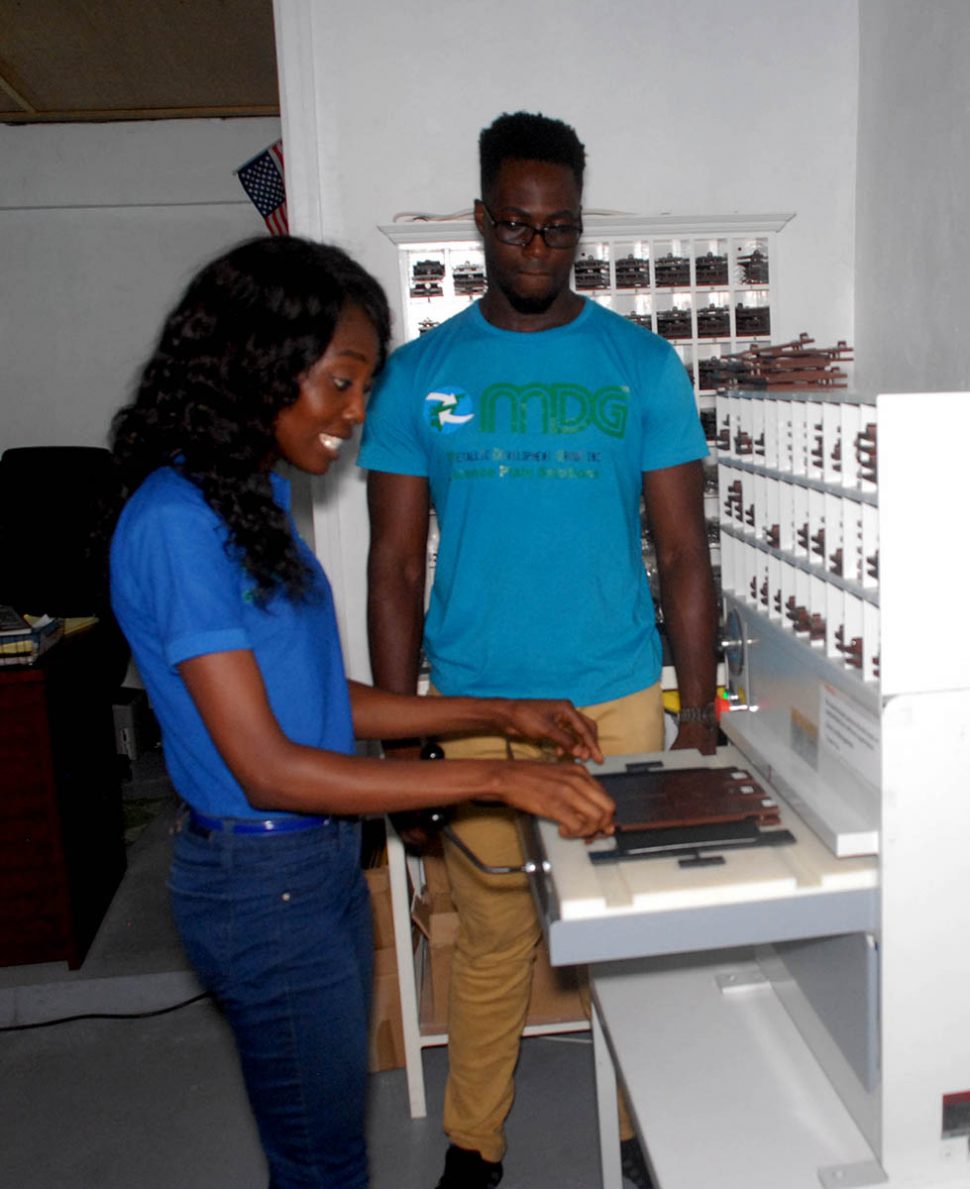With the Guyana Revenue Authority (GRA) moving to bring a greater measure of regulation to the issuance of motor vehicle licence plates, a small, ‘tech savvy’ Guyanese company situated inconspicuously in modest premises at the corners of D’Urban and Smyth streets is seeking to present itself as a partner in the initiative.
Registered since 2015, Metallic Development Group Inc. (MDG) opened its doors to business in June this year and has already begun to offer vehicle owners its own technology-driven licence plates, adorned with barcode, hologram and other features that reflect a sensitivity to the security considerations associated with number plates.
The initiative by Guyanese-born, United States-based businessman Andrew Douglas coincides with the disclosure recently that government intends to move to exert a greater measure of control over the issuance of number plates, a move that is likely to either regulate or remove altogether the scores of vendors who provide the service.
What gives MDG a distinct edge is not only the fact that it has already engaged the GRA on the issue of regularizing the administration of registration but also that it has gone to the trouble of investing in the equipment necessary to render the service more efficient and perhaps more importantly, more responsive to the security considerations associated with vehicle licence plates.
In a country where auto theft and other forms of crime have hastened the necessity to bring a greater sense of order to the issuance of licence plates, MDG, long before government read its own ‘riot act,’ opted to institute security measures of its own. If you engage one of the customary vendors you need to do no more than present the desired licence plate number, perhaps jotted down on a piece of paper. MDG’s Operations Manager Shellon Fraser makes it clear that the company attaches particular procedures to requests for licence plates. To get business done at MDG you have to present some acceptable form of identification, the registration of the vehicle for which you are seeking a licence plate as well as proof of ownership. Those records are stored electronically and can be referred to in support of law enforcement pursuits.
The production process involves two machines, the first that effects the hot-stamping process that embeds the numbers in the plate (so that they cannot be removed) after which there is an embossing process that utilises white to create a contrast between the embossed numbers and the remainder of the jet black plate. This newspaper watched the entire process completed during a period of less than five minutes.
For the moment at least MDG is sticking to the statutes which limit the production process to standard lettering on a black background. Over time, those restrictions do not sit well with some vehicle owners who have chosen to alter both the size of the plate and the lettering. Unless and until the law changes MDG will persist in arguably the ‘old-fashioned’ but legal way of printing licence plates.
Not that the company is not ready for change, however. Adorning the wall of the company’s reception area is an array of alternative plates varying in size, colour and style of lettering and some of them sporting the region (eg Berbice, Linden) from which the vehicle originates as well as the flag of Guyana. MDG is evidently holding itself in readiness for any change in the law that might allow for a ‘revolution’ in the presentation of licence plates.
MDG’s ultimate aim is to work with the authorities to regularize the production of licence plates whilst creating a centralized record-keeping system that can become useful in various circumstances. As the company’s CEO put it during a brief telephone conversation with the Stabroek Business on Wednesday the company would wish to work with both the government and the private sector towards bringing an enhanced sense of order to the production of vehicle licence plates in Guyana.










